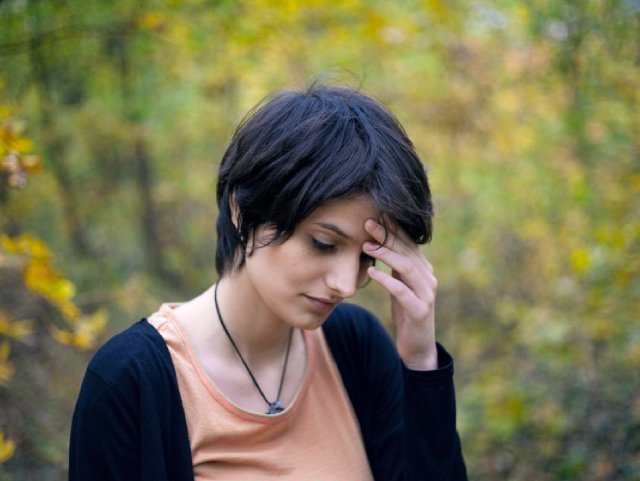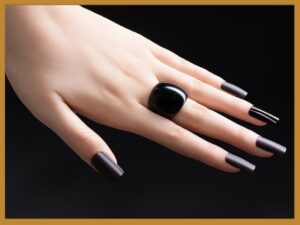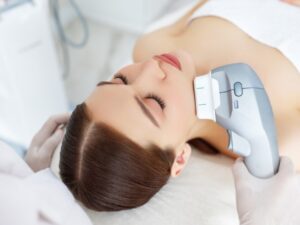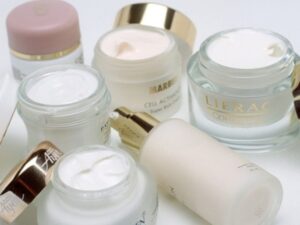The secret to long lasting beauty and youthfulness is a combination of correct skin care, nutrition and of course, perfect hormonal balance. While its easy to use the right beauty creams and take your timely supplements, achieving hormonal harmony is a lot more trickier.
I have said it before and I will say it again. Hormones are powerful! Most of us think hormones only control our sex life and fertility, but the human body produces about 70 different kinds of hormones. They control our growth, metabolism, wound healing and fertility. They are responsible for our mood, our body’s electrolyte balance, our digestion and bone health. They also support pregnancy and breast- feeding. So the effects of these hormones are far-reaching; and minor hormonal imbalances can translate into major physical upheavals.
Women go through a lot more fluctuations in their hormonal cycles compared to men. Puberty, pregnancy, breast-feeding, menopause and the post-menopausal years are all significant transition periods in a woman’s life. How do our hormones affect our skin and hair? Let me describe how they work.
16 year old Leela was born a rosy skinned child with soft and shiny hair. But in the last couple of years, her skin has tanned. Her face and hair are turning oily. She has started to develop body odour. The hair on her hands and legs are turning thicker and she is starting to develop pimples and blackheads. She is growing tall very quickly and has started developing some curves, but these are giving her stretch marks on her thighs and hips. I meet many such Leelas every day, dragged into my office by horrified mothers. These are “the oily years”, and can be very traumatic.
Leela is going through puberty. Her ovaries are starting to produce estrogen (the ‘girl’ hormone) and her adrenal glands are also producing a small amount of testosterone (the ‘boy’ hormone). The thyroid gland in her neck is working over time to keep up with her growth spurt. And thishormonal flux is creating all these changes in her skin and hair.
What should Leela do to preserve her beauty and hygiene at this time? Its time to do away with the ‘baby creams and baby soaps’. She must now bathe twice a day and start using deodorant. She needs a salicylic acid based foaming face wash to keep acne and oily skin under control. She must use a micro-beaded face and body scrub once or twice a week to exfoliate. She must use a gel based sunscreen and an oil-free moisturizer to protect her skin from tanning. She must use a ZPTO containing mild anti dandruff shampoo at least twice a week, to keep away dandruff and oily build-up from her scalp. It is time to wax pit and pubic hair, and consider laser hair reduction treatments if she is over 16 and excessively hairy. She must massage an oil free moisturizer over her body every day to keep adolescent stretch marks away. And she must exercise and remain active, keep her weight under control, drink plenty of fluids, and eat at least 5 different types of fruits and vegetables every day. She can get a clean up done at the salon or use home made face packs made out of fruit pulp, but she is still too young for regular facials.
26 year old Maira went through some of Leela’s turmoil at that age but she is going through a good phase now. She has 2 beautiful children, and she has some stretch marks and suffered from some hair fall after her delivery. But overall, she feels quite good about herself. Her skin is rosy and fair again. It is luminescent and glows with natural good health. Her hair is thick and bouncy, her acne have cleared up, and her libido is strong. Some open pores, a little dandruff, and light freckling are her only annoyances. Her dusky skinned sisters in Asia have started to notice uneven skin tone; with the skin around their eyes, mouth and forehead being a shade darker than the skin on the rest of their body. The 20s to mid 30’s are “the beautiful years”. This is the age when a lot of women take their beauty and youth for granted. They are out in the sun chasing their kids and careers with no time to use a sunscreen or get a facial.
But Maira is a smart woman who knows that investing in her skin now will reap rich dividends in the future. What does she do? She uses a sunscreen religiously and keeps her hair covered when she is out in the sun. She uses moisturizing beauty creams which contain peptides, fruits acids (AHAs) and antioxidants to keep her skin healthy and well hydrated. She never forgets to carry her sun glasses with her. She exercises, meditates and is learning to manage her time and stress levels in a healthy manner. She uses an under eye cream containing peptides and a mild bleaching agent like liquorice. She does not believe in crash dieting, but she eats smaller and more frequent meals with special focus on fruits, berries, herbs, green leafy vegetables and fish. She minimizes her intake of red meat, but has small portions of egg yolk and liver every week. She follows yoga to keep her blood and lymph circulation in check. She gets a professional face and body massage done every month to keep her skin supple and toned. She also gets regular home pedicures done and uses a hand and foot cream every day. She uses a light mineral based body oil before her shower, and she loves to moisturize with fragrance-free products. She meets her dermatologist every quarter. She takes an antioxidant pill and an iron containing pill for a few months every year. And she pampers her hair to a herbal warm oil massage and steaming from a hot towel wrap once a week. She always uses conditioner after shampooing her hair and gets her hair trimmed every few months.
If a woman is this age group is suffering from irregular periods, weight gain, infertility and excessive facial and body hair, then she must consult an experienced endocrinologist to get herself treated for polycystic ovarian disease.
38 year old Suzanne is starting to experience the first signs of ageing. Her laugh lines are now deeper. The skin around her jaw and chin is beginning to sag. She can see fine lines on her forehead, and little crows feet appear on the corners of her eyes when she smiles. Her skin is turning drier and her hair is looking thinner. The mid 30s to the late 40s are “the blotchy years”. She has pigmentation on her face in the form of some age spots and brown blotches. These are called Melasma and are very hard to treat. She is also beginning to wonder if she is going through a second adolescence. She has pimples again, and her dandruff is back. And the most disturbing change is the hair she is sprouting on her chin and sideburns.
By now, Suzanne needs to be on anti-ageing skin care. A Retinol containing night cream alternating with a Co-Enzyme Q10 containing cream is an effective and inexpensive fix. She still needs sunscreen of course. But she will be making more regular trips to the dermatologist for chemical peels, skin tightening laser sessions and the occasional laser hair reduction treatments. She must also start using phytoestrogen and capixyl based hair growth serums to arrest that hair thinning which will get worse with every passing decade. This is the age when most women get their first treatment with Botox and dermal fillers.
Women over 40 must get off the birth control pill. Now that the kids are grown up, Suzanne must ensure 8 hours of uninterrupted sleep at night. More than ever before, this is the age when women must keep away from processed food and cut back on sugar. She must now start taking regular Vitamin E supplements along with flaxseeds, hummus, almonds, walnuts, coconut oil and cod liver oil. These foods are rich in essential fatty acids and natural estrogens which can help her achieve some hormonal balance in a natural fashion. By taking in lots of fiber, some digestive enzymes, and a little probiotic yoghurt, she can regulate her digestion, which is also key in keeping cholesterol and blood sugar levels down. This in turn will make her hormones happy.
53 year old Parminder has completed one whole year without a single period. She has now officially attained menopause. Fatima was always blessed with naturally healthy skin and was always complimented for her youthful good looks, even when she was well into her 40s. However, in the last 1 year, Parminder can see noticeable signs of ageing when she compares her mirror image to pictures taken just a couple of years ago. The post menopausal years are referred to as the “wrinkly saggy years”. Her eyes are the first to give away her age. She has bags and wrinkles under her eyes. The skin on her neck is loose and wrinkly. Her skin is dry, pale, coarse and starting to develop a leathery quality. Tiny, broken, red veins appear on her face, and her skin looks ruddy in the sun. She is aghast and depressed and it seems like she is ageing in fast forward. Her hair is gray and much thinner, her libido is low and sex is no longer enjoyable because of poor lubrication.
Post-menopause, a woman’s ovaries shrink and can hardly produce any more estrogen. Along with the unpleasant changes in her skin and hair, her body is going through a sea-tide of overwhelming changes as well.
Is Hormone Replacement Therapy (HRT) the answer to these woes? HRT is mostly used to treat bone thinning in older women, or in women going through premature menopause. It is not recommended in women under 40 or over 60. It comes with its own unpleasant side effects; and oral HRT is NEVER recommended as a purely cosmetic treatment. Estrogen containing creams can no doubt tighten and plump up ageing skin. Estrogen containing patches are safer than oral estrogen, and estrogen containing vaginal creams can help with frigidity and incontinence. But in women of color, it can lead to pigmentation issues like Melasma.
Parminder must remain active to keep her bones and heart healthy, and her mood light. Keeping weight under control will become increasingly difficult but she must persevere. Yoga and walking are safer exercises at this age. She must take daily Calcium and Vitamin D supplements. As far as current evidence goes, the mantra to achieve hormonal harmony is Go Holistic and Choose Organic.
To conclude, longer life expectancy in the last 50 years have meant that more and more women are now living beyond menopause and spending several years of their life in a hormone-deprived state. But by understanding how hormones influence your life over various time eras, one can work towards attaining optimal balance through exercise, weight control and a few simple dietary manipulations.




